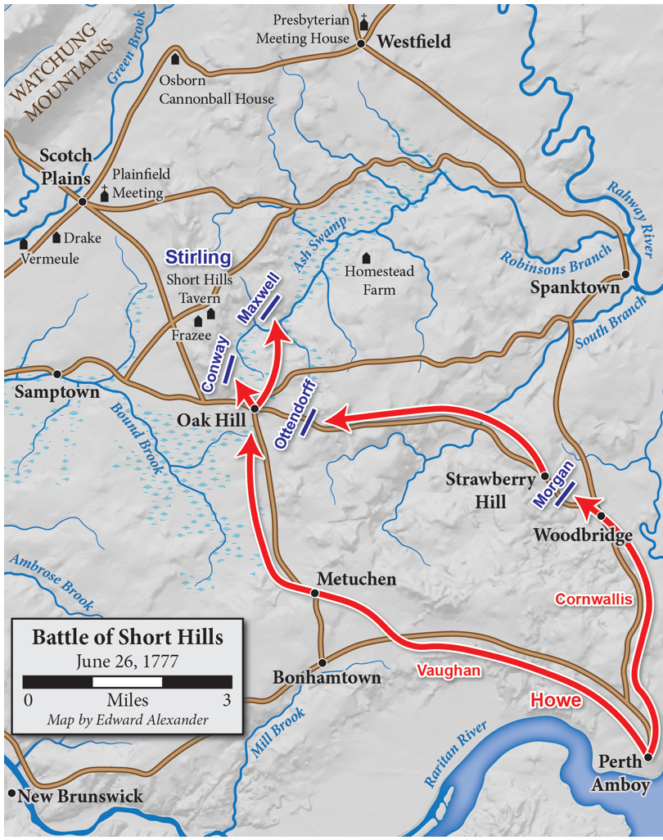During the Middlebrook Encampment periods during the Revolutionary War, George Washington strategically utilized the Watchung Mountain Range for both his soldiers and his own advantage. The mountains provided a perfect view of the surrounding areas where the British were stationed and moving their troops. Two lookout points on the Watchung Mountain Range stand out as those that George Washington most often utilized.
Washington’s Rock State Park
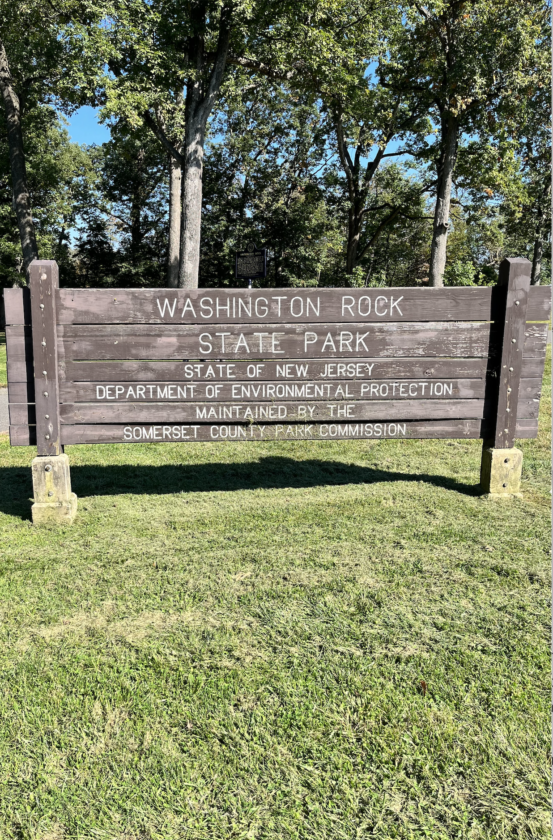
The more recognized lookout point is known as “Washington’s Rock.” Washington’s Rock is located in modern-day Green Brook Township, near Route 22. The Green Brook location was a major lookout for George Washington, specifically against the troops of British General William Howe. From this point, Washington could see British troops in Perth Amboy, New Brunswick, and Woodbridge. In total, he had a thirty-mile panoramic view. However, the lookout point was no secret to General Howe.
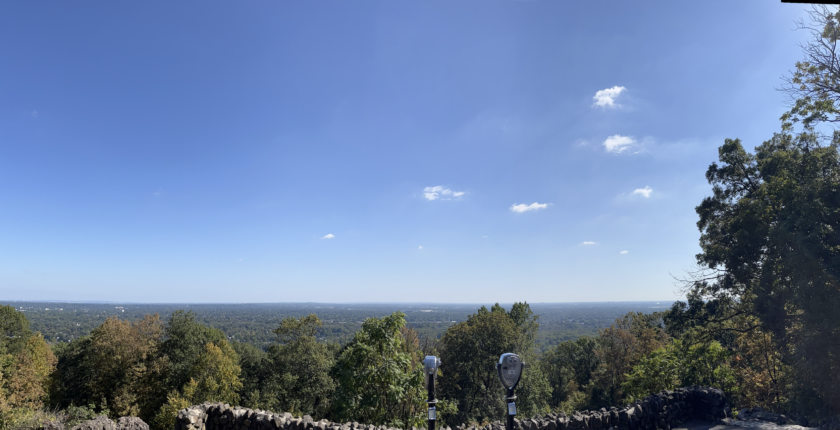
Aware that Washington’s lookout position in modern-day Green Brook existed, General Howe attempted to draw American forces down from the mountain. By doing this, the British troops would have the advantage in an open firefight. Howe’s first attempt to fool Washington in June 1777 failed, as he tried to move troops from Perth Amboy to Franklin. Howe did this hoping to mislead the American forces into thinking they would attack Philadelphia. However, a second attempt just a few weeks later succeeded. This time, Howe moved troops in the other direction towards Staten Island. While observing this, Washington believed Howe was moving his troops out of New Jersey back into New York. Washington then ordered American troops out of the mountains down into the flatlands below. Upon seeing his trap had worked, General Howe and his troops quickly reversed course to meet the American troops in what would later be called the Battle of Short Hills.
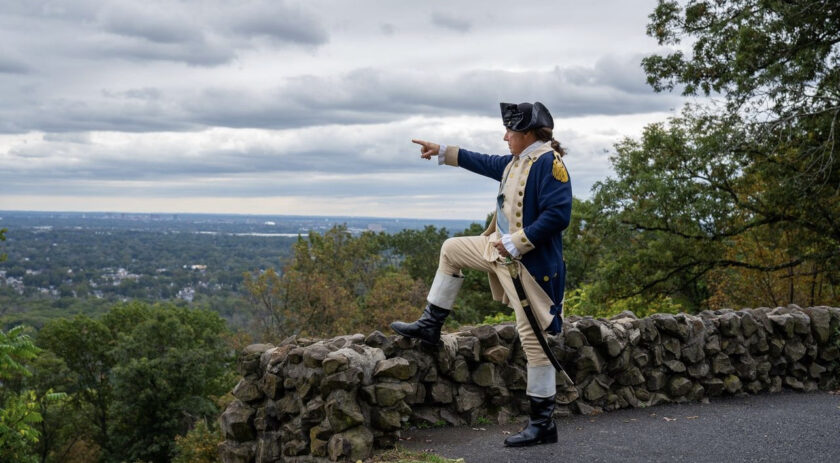
Washington’s rock played an important role in the prelude and conclusion of The Battle of Short Hills, which took place on June 26, 1777. American forces saw initial success because Washington had been able to observe a column of British troops moving from Woodbridge on top of his lookout point. While the Americans could fire the first shots, British superiority in numbers and artillery power forced American troops led by General Lord Stirling, to retreat back into the Watchung Mountains. After a series of skirmishes, Lord Stirling safely returned to the Middlebrook Encampment. The intense heat prevented the British troops from further pursuing the Americans into the mountains. Despite being a tactical defeat, his lookout point allowed Washington to see the physical error of his ways. Soon after, Washington placed his troops in a more secure position. Due to Washington’s superior positioning, General Howe had determined a British attack would not be successful and returned to his post in Perth Amboy. By June 30th, 1777 Howe’s troops left New Jersey altogether.
The significance of this lookout point has always been held in high regard. Washington’s Rock is one of the oldest state parks. The land was purchased by the state in 1913 and by 1932 it was opened to the public and dubbed, “Washington Rock State Park.” Today the park is still easily accessible to the public and includes, a few walking trails, picnic tables, and tower-view lookout binoculars. A large flagpole with a commemorative plaque at the base stands in the middle of the park. The plaque reads, “From this rock General George Washington watched the movements of the British forces during the anxious months of May and June 1777.” The lookout point still features a great view of New Brunswick, Woodbridge, Perth Amboy, and the surrounding area.
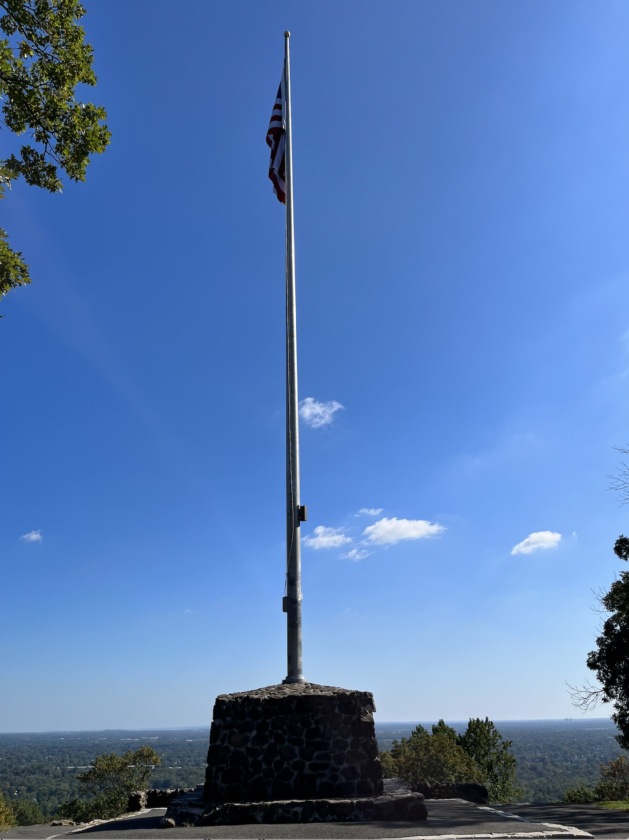
The Eagle’s Nest at the Chimney Rock
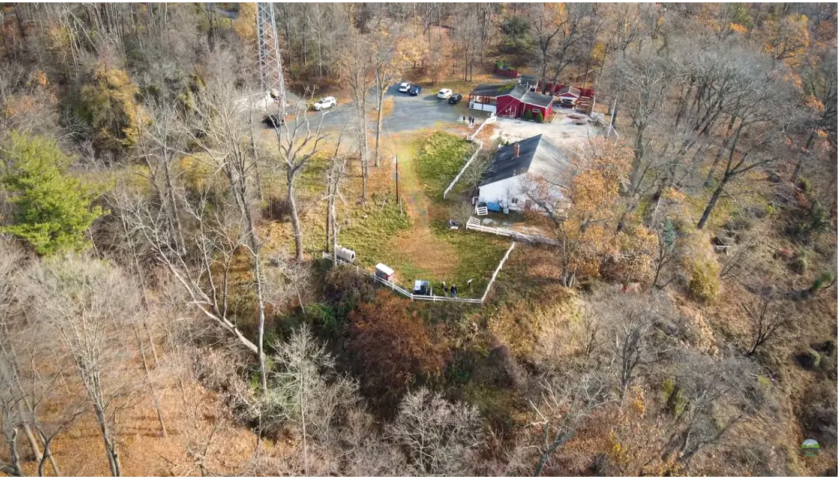
Situated in an unassuming quiet area within Martinsville overlooking the Chimney Rock exit of Route 22, lies another lookout point of George Washington. While this spot is not as publicized, it was claimed to have been Washington’s most utilized lookout point. This lookout point, known colloquially as the “Eagle’s Nest,” was relatively unknown until the 20th century and was not recognized as a historical landmark by the county until the beginning of 2023.
In the middle of the last century, a multi-generation Somerset County native named Herbert (“Herb”) Patullo purchased property on the location of Washington’s “Eagle’s Nest.” Patullo became interested in American history in his youth and after his service in WWII. He worked for the army supply depot in Hillsborough and Belle Meade during the war. He admired local hero John Basilone, who ultimately inspired him to continue his service after the war. Herb served in the US Navy on the destroyer USS Ware in the late 1940s to early 1950s. Shortly after returning to civilian life, he opened Patullo’s Tavern (later Patullo’s Restaurant) in Bound Brook. Known for its burgers, his restaurant was open for over forty years.


By the 1970s Herb’s love for local history found its purpose. He purchased a then-dilapidated home and the surrounding property of the Eagle’s Nest site from the county in 1974. In 1988, he purchased the entire land along the ridge line between Chimney Rock Road and Vosselor Avenue, measuring 40 acres. In an adjacent building to his home, Herb operated a small museum on and off, which contained historical memorabilia from the Revolution and some items from his own time in the service. Most prominent in this collection was a painting by a local artist, depicting a scene of a flag raising on what would become Patullo’s property. The painting was labeled “Middlebrook Heights.” There were also original paintings by the same artist depicting scenes from the battles of Monmouth and Bound Brook. While there is no definitive proof, the Eagle’s Nest property may have been the location where the first American flag was unfurled. Herb decorated the Eagle’s Nest lookout with cannons and a large flag pole. He remained on the property until he died in 2020.
In Herb’s estate, he called for the county to preserve his property as a historical site and not develop it. His wishes were fulfilled with no issue, as Somerset County currently owns and has preserved the land. In recent years, the county has publicized the Eagle’s Nest lookout site more. Local historian Robert A Mayers, featured the site in his 2021 book, “Middlebrook: The Revolutionary War Encampment that Saved America.”
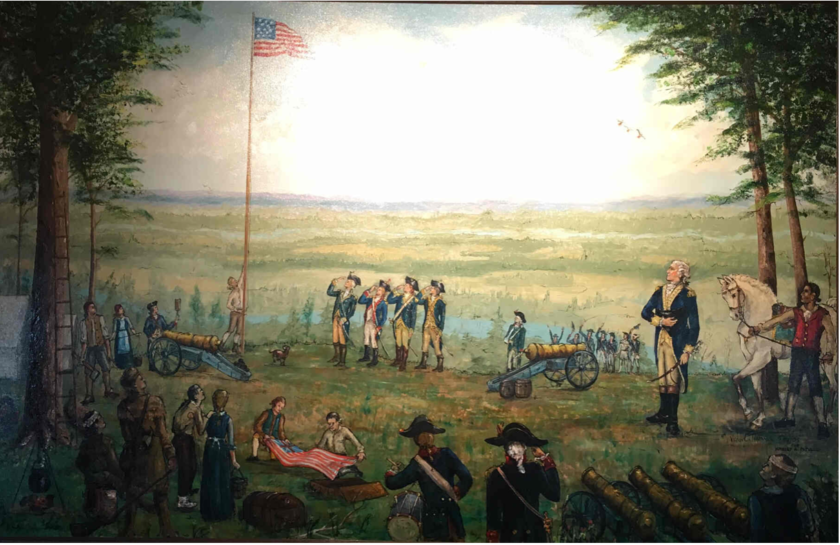
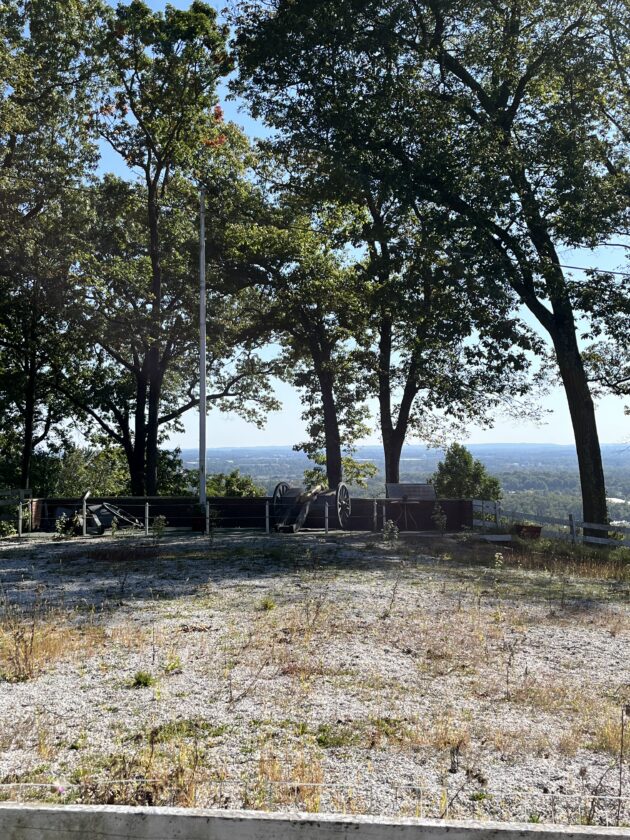
Somerset County has incorporated the property into Washington Valley Park and has produced a promotional video of the site. The property itself is not currently open to the public, but visitors may view it from behind the fence surrounding its buildings. Additionally, a parking lot and a walking trail adjacent to the property site leads down the mountain next to Chimney Rock Road. Through the efforts of Herbert Petullo, the Eagle’s Nest has regained its rightful place in the narrative of Somerset County and New Jersey history. What was once a forgotten lookout point at the edge of the woods, has become the centerpiece of Somerset County’s celebration of the United States’ 250th Anniversary. Historians, history lovers, and proud citizens of the County alike should be excited to see what events the County has in store for the Eagle’s Nest in 2026.
Somerset County History
Bookmark this site with a interactive map of many of the historic sites around Somerset County, New Jersey also known as the “Cockpit of the American Revolution.”
Comments?
Do you have anything to share on this story?
Please Post Below
